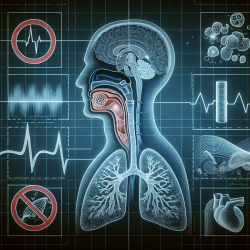Understanding Impulsivity in Traumatic Brain Injury: A Pathway to Enhanced Practice
As a Special Education Director, I am constantly exploring ways to improve our practices and support our students effectively. One of the challenges we face is addressing impulsivity in students who have experienced traumatic brain injury (TBI). The research article titled Definition of Impulsivity and Related Terms Following Traumatic Brain Injury: A Review of the Different Concepts and Measures Used to Assess Impulsivity, Disinhibition and other Related Concepts provides valuable insights into this complex issue.
Impulsivity, a common consequence of TBI, significantly impacts a student's quality of life, social interactions, and educational outcomes. The article highlights the lack of a consensual definition and measurement tool for impulsivity, emphasizing the need for a multidimensional approach to understanding and assessing this construct.
Key Takeaways for Practitioners
The research identifies four general concepts related to post-TBI impulsivity:
- Impulsivity: Acting without thinking or preconsideration, often leading to quick decisions.
- Deficit of Inhibition: Inability to control, inhibit, or suppress ongoing responses or distractions.
- Deficit of Behavior Regulation: Challenges in self-awareness, self-monitoring, and planning.
- Sensation Seeking: Engaging in behaviors that are exciting but potentially harmful.
Understanding these concepts can help practitioners tailor interventions to address specific needs. For instance, the UPPS model of impulsivity, which includes dimensions such as urgency, perseverance, premeditation, and sensation-seeking, offers a comprehensive framework for evaluating impulsivity in students with TBI.
Implementing Research Outcomes
Practitioners can enhance their skills by incorporating the following strategies:
- Adopt a Multidimensional Approach: Use the UPPS model to assess different dimensions of impulsivity and tailor interventions accordingly.
- Utilize Direct Observation: Observe students' behaviors in various settings to gain a comprehensive understanding of their impulsivity.
- Engage in Continuous Learning: Attend conferences, webinars, and workshops to stay updated on the latest research and best practices in managing impulsivity in TBI.
- Collaborate with Specialists: Work closely with therapists and psychologists to develop individualized education plans that address impulsivity and related challenges.
Encouraging Further Research
The article underscores the need for further research to refine the definitions and measures of impulsivity in TBI. Practitioners are encouraged to contribute to this body of knowledge by documenting their observations and sharing their findings with the research community.
By embracing the insights from this research, we can transform the challenges of impulsivity into opportunities for growth and development for our students. Let's continue to strive for excellence in special education and support our students in reaching their full potential.
To read the original research paper, please follow this link: Definition of Impulsivity and Related Terms Following Traumatic Brain Injury: A Review of the Different Concepts and Measures Used to Assess Impulsivity, Disinhibition and other Related Concepts.










